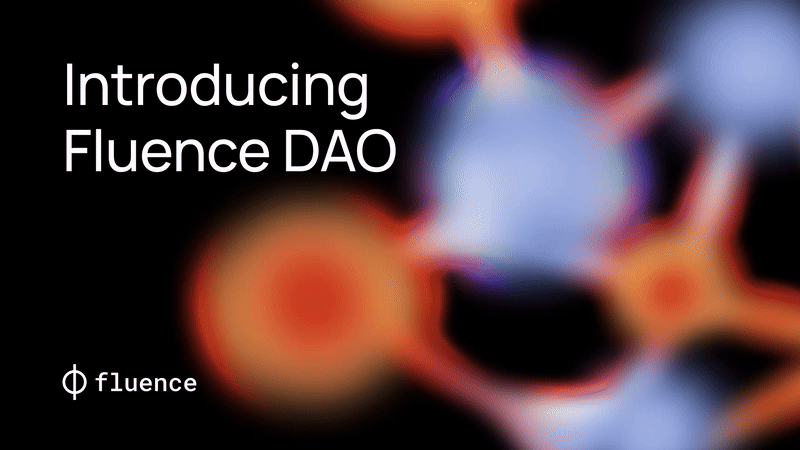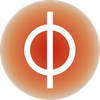The Fluence DAO – how and why

From the inception of Fluence Labs, our goal was to empower our community to govern and control the Fluence protocol in a genuinely decentralized way. Today, we are thrilled to announce that we have made an important step towards that goal with the official incorporation of the Fluence DAO in Switzerland.
TLDR
The Fluence DAO is architected to:
(1) give voting control to the on-chain DAO either for direct proposals or to elect the governance committee members,
(2) protect the project from rogue votes and attacks
(3) insulate DAO participants from legal liability.
The Fluence DAO
Like many other projects, we have chosen a DAO (Decentralized Autonomous Organization) structure for our governance model, and we structured our DAO so that on-chain voting drives all major decisions from the very beginning.
DAOs are becoming the governance model of choice for the Web3 ecosystem but setting up a DAO to be decentralized, legally compliant and resilient to governance attacks while also insulating members from personal legal liability isn’t easy.
We have always wanted as much of the decision making to be on-chain as possible but are concerned about the personal legal liability (mainly in the US) that a pure on-chain DAO poses to all DAO members. To address our goals of on-chain voting while protecting DAO members, we have structured the DAO as a Swiss Association which provides a protective legal wrapper. Within this Swiss Association, decisions are determined by on-chain voting either directly or indirectly. Fluence Labs as a company will have no special rights with regard to voting and none of the Fluence Labs founders will control the Association.
Why not just on-chain?
It is tempting to create an on-chain DAO and leave everything to the community, and many DAOs have done just that, but in the absence of a legal structure, the DAO is viewed as an ‘unregistered general partnership’ in the US which means that every member is liable for all of the liabilities of the DAO. Last year a group of users sued the Ooki DAO, after a security breach led to a $40 million loss. All members of the DAO including management, investors and community members may be liable if the suit is successful. This liability extends beyond potentially negligent security breaches, and members could be liable if a DAO were to interact with a sanctioned person, or even spent the treasury in a way that later seemed questionable. Any regulatory body and even any coin holder(!) could sue any DAO member. Out of all the DAO members, the most easily identifiable are the team, leading members of the community and investors. The legal wrapper doesn’t have to cost more than $10,000, but structuring the entity to preserve as much of the DAO’s on-chain voting autonomy as possible takes some effort.
Why Switzerland?
Projects have a number of jurisdictions to choose from; Cayman Islands, Wyoming, Switzerland, the United Kingdom and the British Virgin Island to name a few. All of these jurisdictions have their nuances, but we choose Switzerland for its high-quality reputation and because Switzerland allows the DAO direct control over the legal entity while in some other jurisdictions, such as the UK, the DAO’s votes serve only as a recommendation and are not binding.
In Switzerland, we chose an association instead of a foundation because a Swiss association is a participant driven organization unlike the Foundation structure which was chosen by an earlier generation of crypto projects. These earlier projects used Swiss foundations to separate governance from the protocol development and operation, but for those projects, decentralized governance was not a priority. In the Foundation structure, there is no role for a DAO, as the Foundation board is responsible for key decisions and the board even appoints future board members. This lack of community involvement leaves the potential for a divergence of interests as famously happened between the Tezos Foundation and the Tezos protocol. A Swiss Association, however, offers the benefit of a legal structure where the DAO makes all of the decisions, either directly or indirectly. There are modest ongoing costs such as an auditor and also a small tax on all Association expenses.
How does it work?
The DAO will use the Governor model for on-chain voting, similar to what is used by Compound, Uniswap, and ENS. Any token holder will be able to create proposals, delegate and vote for proposals. One percent of stake is required to put a proposal to a vote and approving a proposal requires a majority of votes cast, with a minimum of 4% of the token supply.
The Fluence Association has three constituencies: the DAO, the Governance Committee, and the members of the association. Any coin holder is a member of the DAO, the DAO elects the members of the Governance Committee via an on-chain vote and also determines the criteria to become members of the association. A change to the Association’s articles requires the approval of all three groups.
To protect against a rogue vote of the DAO, we gave the Governance Committee the right to veto DAO decisions, but the DAO elects the Governance Committee every two years, giving ultimate control to the DAO. Several other projects such as Synthetix also have built in a similar veto right. The Fluence DAO Governance Committee members are selected on a bi-annual election cycle so that elections are sufficiently rare to encourage a high level of participation. The Governance Committee has a maximum of seven members, with each member’s election requiring both a plurality of the votes cast and reaching a minimum threshold of votes in order to prevent members from being elected who do not have sufficiently broad support.
We think this structure ensures the maximum potential for decentralized, community control and a vibrant, healthy project, and we hope our work here will be useful to other projects focused on DAO Governance. All of our legal documentation is available on our website, and we are happy to help answer any questions as we would like to see the DAO governance model succeed and thrive.
Follow us on Twitter to stay up to date on Fluence DAO news.

